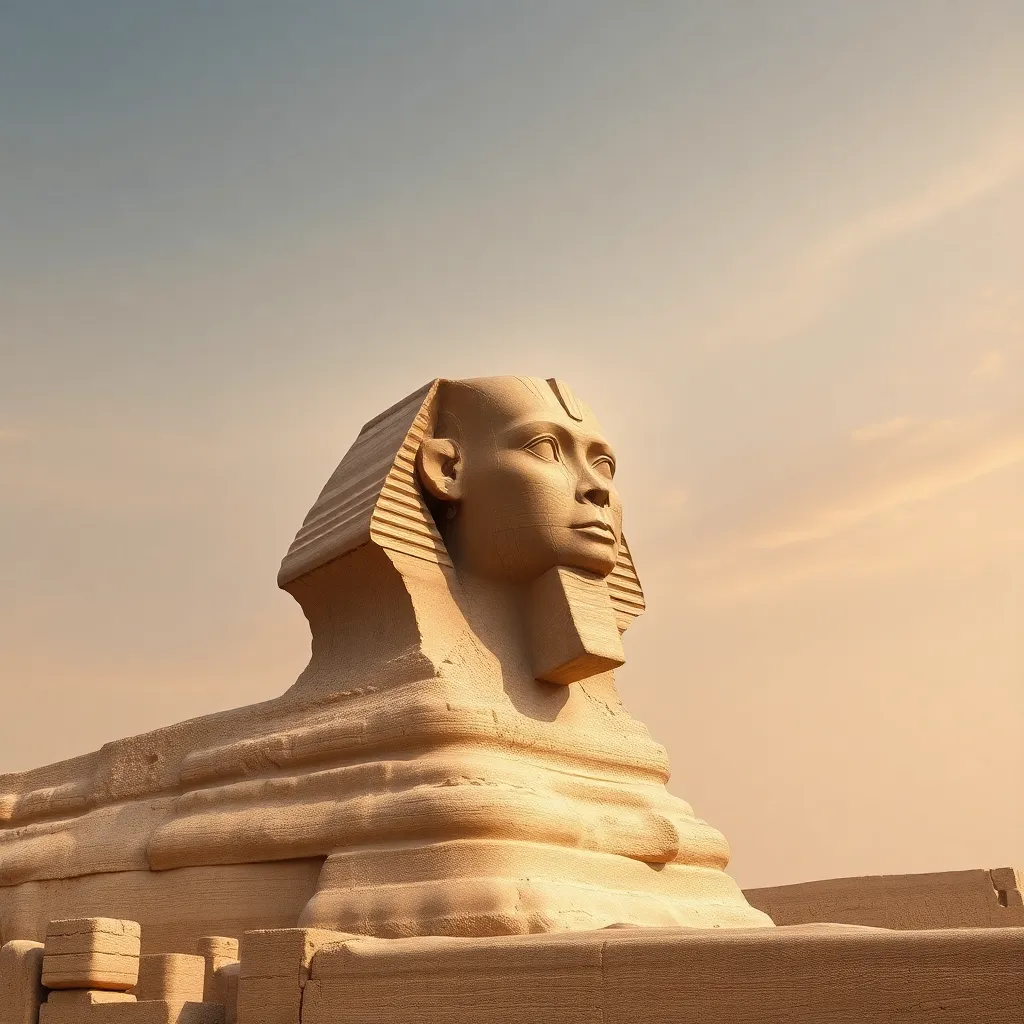The Sphinx and Its Role in Egyptian Governance
I. Introduction
The Sphinx stands as one of the most iconic symbols of Ancient Egypt, captivating the imagination of scholars and tourists alike. With its majestic body of a lion and the head of a Pharaoh, the Sphinx embodies the essence of Egyptian mythology and governance.
Throughout history, the Sphinx has played a significant role in relation to Egyptian governance and society, serving as a powerful emblem of authority and protection. This article aims to explore the multifaceted role of the Sphinx in governance, delving into its historical context, symbolism, religious significance, and its impact on political narratives.
II. Historical Context of the Sphinx
The Great Sphinx of Giza, one of the oldest and largest monumental sculptures in the world, was constructed during the reign of Pharaoh Khafre around 2500 BCE. It is believed to have been carved from a single limestone outcrop, showcasing the advanced engineering skills of the Ancient Egyptians.
In the context of the Old Kingdom, the Sphinx symbolized the Pharaoh’s power and was associated with the sun god Ra. Over time, the Sphinx evolved in its significance, becoming a symbol of the eternal protection of the Pharaoh and the stability of the state.
III. Symbolism of the Sphinx in Governance
The Sphinx serves as a profound representation of royal power and authority. Its lion’s body signifies strength and courage, while the human head symbolizes intelligence and leadership. This combination reflects the ideal qualities of a Pharaoh:
- Strength
- Wisdom
- Protection
Moreover, the duality of the Sphinx embodies both protection and vigilance in governance. As a guardian of sacred spaces and knowledge, the Sphinx was believed to watch over the land, ensuring the safety and prosperity of the Egyptian people.
IV. The Sphinx and Religious Significance
The Sphinx is deeply interconnected with Egyptian mythology and religious beliefs. It is often linked to deities such as Horus and Ra, reinforcing the divine right of the Pharaoh to govern. The Sphinx’s presence in temples and funerary complexes highlights its role in religious ceremonies and the beliefs surrounding the afterlife.
As a symbol of divine legitimacy, the Sphinx influenced governance by establishing the Pharaoh’s authority as sanctioned by the gods. This connection between religion and politics was crucial in maintaining social order and reinforcing the ruler’s power.
V. The Sphinx as a Tool for Propaganda
The Sphinx was also utilized as a powerful tool for propaganda, promoting the Pharaoh’s image and ideals. Its grand scale and strategic placement served to impress upon the populace the might of the ruler. The incorporation of the Sphinx in art and architecture often served as a political statement, symbolizing the Pharaoh’s connection to the divine.
Through its enduring legacy, the Sphinx reinforced the notion of the Pharaoh’s divine right to rule, embedding itself in the cultural consciousness of Ancient Egypt and beyond.
VI. The Sphinx in Administrative and Legal Contexts
The Sphinx played a notable role in the establishment of laws and order within Ancient Egyptian society. As a symbol of justice and protection, it was believed to embody the principles of Ma’at, which represented truth, balance, and cosmic order.
Historical references to the Sphinx can be found in legal texts and decrees, where it is often invoked as a guardian of the laws and as a reminder of the Pharaoh’s responsibility to uphold justice for the people.
VII. The Decline of the Sphinx’s Political Influence
Despite its powerful symbolism, several factors led to the diminishment of the Sphinx’s role in governance over time. Changes in political power, cultural shifts, and the rise of new dynasties altered the landscape of Ancient Egypt.
As new religious and political ideologies emerged, the Sphinx became more of a relic of a bygone era, its political influence fading in the face of evolving governance structures.
VIII. Conclusion
In summary, the Sphinx embodies a multifaceted role in Egyptian governance, serving as a symbol of power, protection, and divine legitimacy. Its legacy continues to inform contemporary understanding of ancient power structures and the intricate relationship between governance and religion.
As we reflect on the importance of preserving historical symbols like the Sphinx, we gain insight into the narratives that shaped societies and continue to influence modern governance. The Sphinx remains a testament to the enduring legacy of Ancient Egypt and its profound impact on the world.




